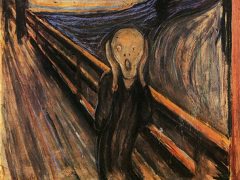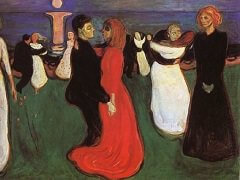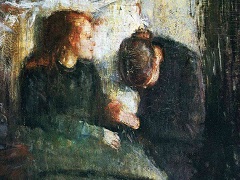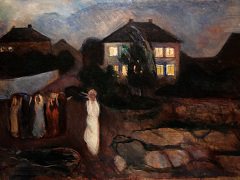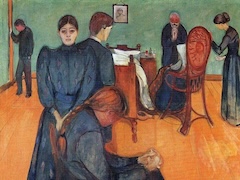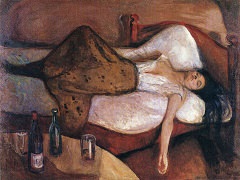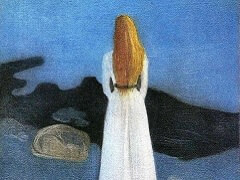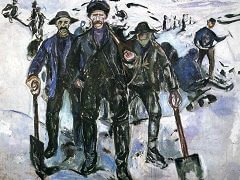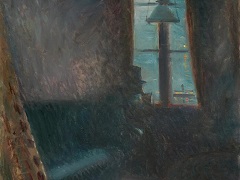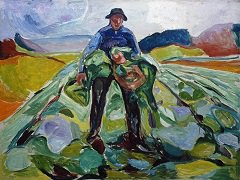Workers Returning Home, 1913-15 by Edvard Munch
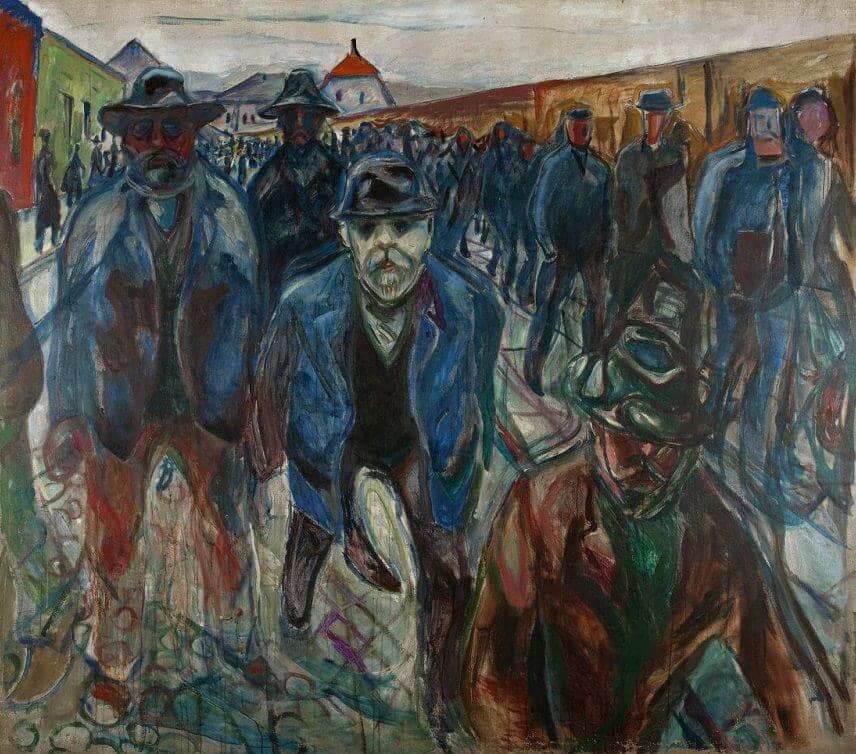
No other painting conveys so strongly Munch's belief in the working class as the dominant force in the society of the future. The tramp of the weary workers along the road home, from the distant vanishing point up to and beyond the picture plane, almost certainly signifies the march of the working class from the distant past up to the present and beyond it into the future, which is to belong to them. In contrast to this forward movement, and causing it to seem all-the-more relentless, the perspective shoots inward, accompanied in the middle ground on the left by a few small figures of bourgeois appearance; they recede into the past which, from Munch's standpoint, is where they belong. To augment the grandeur of the workers' procession he shows most of the scene from a low eye level, but as the foreground figures successively approach the picture plane the eye level rises in steps, so that the man in front, seen from a height and bisected by the base line, seems to be walking past us out of the picture, creating a cinematic effect. The use of multiple contours, especially evident in the leading figure, further increases the impression of movement. In fact the whole picture seems dominated by a tangle of wiry lines, more like a drawing than a painting; the lower legs of the man on the left are actually transparent, allowing us to look through them at the cobblestones.
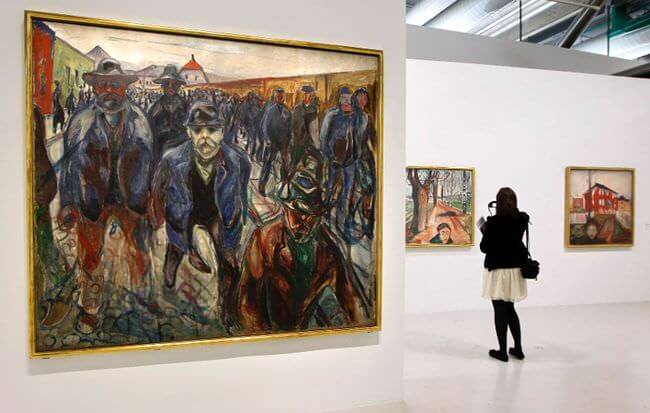
All the men are dressed predominantly in blue, and all have grim anonymous faces dulled by long hours of heavy labor - except the truncated leader, who wears a wine-red jacket and whose face and hat bear a more than passing resemblance to those of Hans Jaeger, the initial inspirer of the sentiments expressed in the picture, who had died a few years before it was painted. Munch also identified himself with these workers. 'Do you know who's walking there?' he once remarked of this work, 'It's me, I tell you.'

